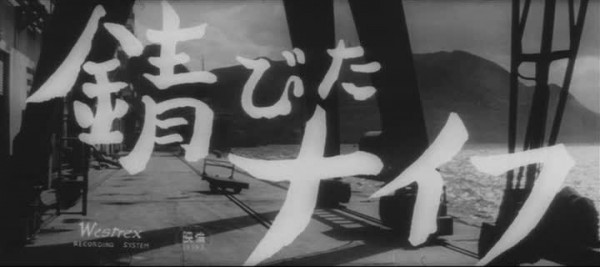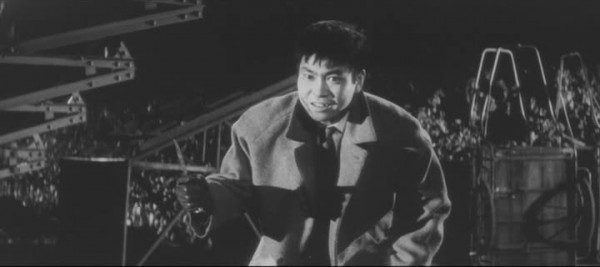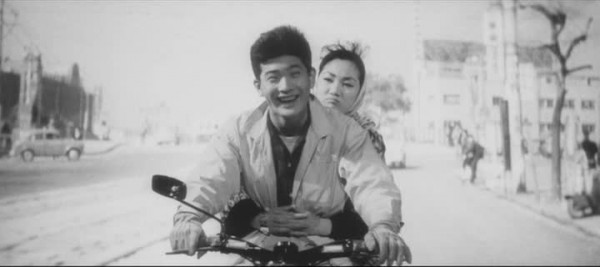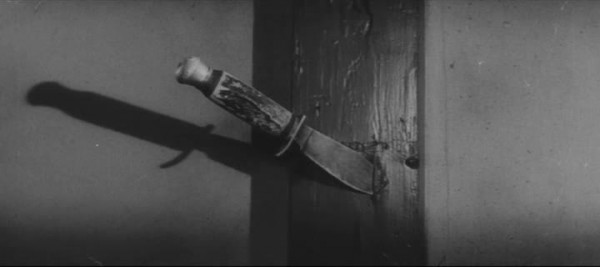Rusty Knife
aka 錆びたナイフ aka Sabita Naifu

1958![]()
Written by Shintaro Ishihara
Directed by Toshio Masuda

Yukihiko Tachibana (Yujiro Ishihara) is released from prison and trying to go straight, after spending time for killing the man who raped and murdered his girlfriend. But the crime of what happened to her still haunts him. Meanwhile, the cops look for witnesses to murders committed by the local yakuza boss, something Tachibana unwittingly became during his time as a thug. But when he and fellow witness Makoto Terada (Akira Kobayashi) get approached by the cops, they get pulled back into the underworld, and soon there will be a whole lot more murders as the yakuza moves to silence everyone and Tachibana discovers his girl was attacked by more people when she was killed.
The debut picture of future hitmaker Toshio Masuda, Rusty Knife weaves a believable web of police seeking justice through the courts, yakuza bribing and murdering their way clear, and the people caught in the middle. It’s only really handicapped by the too obvious reveal of who the real villain is, his character existing entirely to be a big reveal and contributing little else. The Nikkatsu action format still had a few kinks to work out, but the overall style is coming along nicely.

Mie Kitahara clocks in another appearance alongside frequent costar and future husband Yujiro Ishihara as Keiko Nishida, a daughter of a politician who killed himself, until information comes to light that it was staged and he was murdered. Tachibana and Terada are two of the witnesses to the staging, but despite knowing Nishida, he doesn’t realize it was her father he saw being killed until much later. Unfortunately, she seems largely an extraneous character, only sharing a few scenes with Ishihara. While it is nice from a world building stand point, it becomes a negative ding in the film on the emotional front.










